TV power supply diagram
Today you can see a variety of TVs on the market. Sometimes, choosing a TV from such a huge selection is not easy. And even more so, knowing what scheme they work in is generally a “dark forest”.
The content of the article
What is the power supply circuit for the TV?
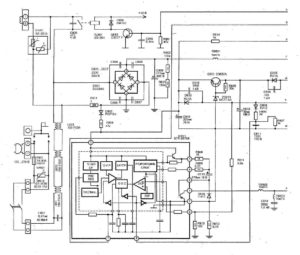 The power supply is almost the most important and main part in a TV, since the entire device runs from it. It generates voltage for the lamps in the TV. The power supply circuit or operating principle consists of the voltage of 2 half-wave rectifiers. The rectifiers are connected in series. If at least one part does not work, then malfunctions and defects will affect the entire operation of the system. Therefore, the serviceability of the entire power supply must be carefully monitored and given periodic rest. If the TV does not turn on and the Pover button does not want to work, then this may indicate that the power supply is damaged. The power circuits have a filter on the transformer and capacitor. The network input is protected by a fuse, and if you need to turn it off with a toggle switch. The transformer is needed for full load; its voltage remains reduced, which does not interfere with performance and overheating.
The power supply is almost the most important and main part in a TV, since the entire device runs from it. It generates voltage for the lamps in the TV. The power supply circuit or operating principle consists of the voltage of 2 half-wave rectifiers. The rectifiers are connected in series. If at least one part does not work, then malfunctions and defects will affect the entire operation of the system. Therefore, the serviceability of the entire power supply must be carefully monitored and given periodic rest. If the TV does not turn on and the Pover button does not want to work, then this may indicate that the power supply is damaged. The power circuits have a filter on the transformer and capacitor. The network input is protected by a fuse, and if you need to turn it off with a toggle switch. The transformer is needed for full load; its voltage remains reduced, which does not interfere with performance and overheating.
The diode bridge comes without a radiator. The voltage of transformer 2, rectified by it, is smoothed out by capacitor 2, and network flaws are filtered by capacitor 3. To reduce the voltage in the circuit, a large capacitance capacitor is provided.
To set up a TV circuit you don’t need to know anything. Just set up a 12 Volt load to the output, in the form of a lamp from the car headlights, and use 2 regulators to set the voltage to 12.6 Volts. The resistor must be positioned so that, under load, the current stops growing when the resistor slider is turned.
Principle of operation
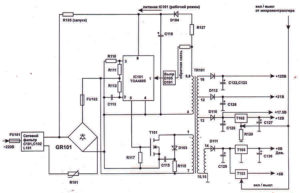 A switching power supply is distinguished by rectifying the mains voltage and then converting it to high-frequency voltage. It can drop to the required values, straighten and filter. First, the current passes to the bridge motor. The voltage limiter immediately acts (protects). Then it goes through filters, where it is transformed. Capacitors are needed to charge resistors. The node starts up after a breakdown of the dinistor. Later, the transistor is turned on in the power supply.
A switching power supply is distinguished by rectifying the mains voltage and then converting it to high-frequency voltage. It can drop to the required values, straighten and filter. First, the current passes to the bridge motor. The voltage limiter immediately acts (protects). Then it goes through filters, where it is transformed. Capacitors are needed to charge resistors. The node starts up after a breakdown of the dinistor. Later, the transistor is turned on in the power supply.
If generation occurs, the diodes will start working. They will be connected by cathodes. By means of a negative potential, the dinistor can be locked. In addition, there is a limitation. To prevent transistors from saturating, there are fuses that operate after a breakdown. To do the opposite, you need a transformer. At the output, the current exits through capacitors.
Possible causes of malfunction
It is important that if the power supply malfunctions, you need to understand that it is not always possible to repair it. Sometimes you need to replace it. There are blocks that simply cannot be repaired, but mostly they are replaced with new ones (usually filled with compound).
If the TV does not turn on, and the LED is on, but there is no transition to sleep mode, there is interference in the image and background, there is sound, but does not show the image, then you need to contact a professional technician.
Reasons for failure:
- Low circuit output.
- Defective components.
- Operating the TV in unacceptable conditions.
- Presence of fuel elements, exceeding the norm.
- Wear of parts.
- Rectifier short circuit.
- Combustion of a power or key transistor.
- Reduced resistance.
If the fuse blows, you need to look at the electronic board. Basically the filter capacitor is swollen. To check high voltage diodes you need to use a tester. Afterwards, you need to insert a new fuse and turn on the unit.
If we talk about all TVs, then the filter capacitors are most often weak. The malfunction of the capacitors is expressed by swelling or leakage of liquid from the housing. For consultation, remove the diodes and view them. Check the choke winding and diodes with a tester. Defective parts need to be replaced.
IMPORTANT. You need to remember that it will be difficult to independently understand the operation and malfunctions of the power supply and make diagnostics without additional equipment.
TV repair includes checking the integrity of the cord, disassembling the receiver and board, inspecting the unit, and checking solder joints. If it was not possible to find out the reason visually, then you need to check the operation of the fuse, diodes, capacitors, and transistors. If the budget allows, then the master will fix everything for little money.
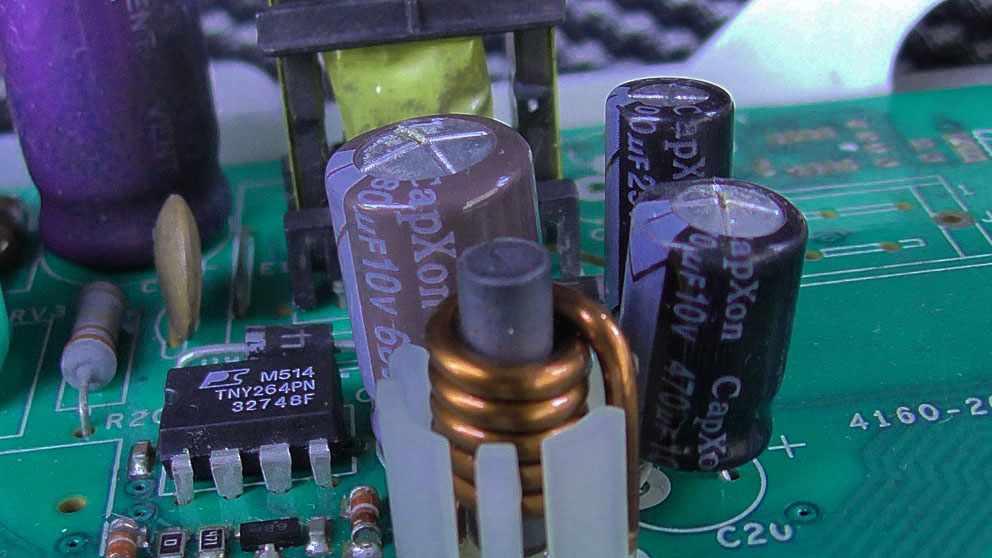

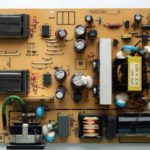
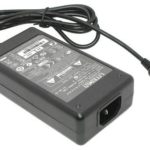
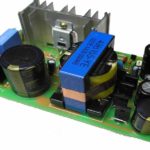
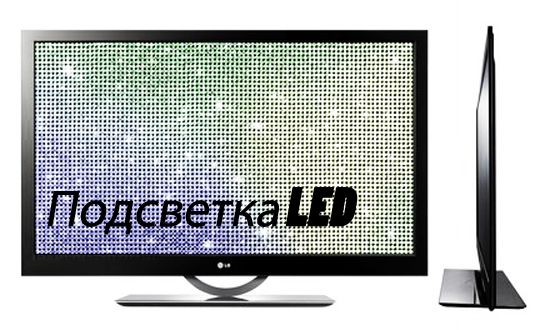

It is written very clumsily, as if it was written by a foreigner, or the text was machine translated.